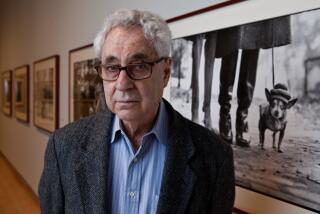Pioneer in Fast-Photo Business : Donald Bleitz, Bird Photographer, Dies
- Share via
Donald L. Bleitz, who made a small fortune with one of Los Angeles’ first fast-photo businesses but abandoned that enterprise more than four decades ago to concentrate on a lifetime fascination with bird photography, is dead at age 70.
Bleitz, an engineer, author, ornithologist and inventor, died Monday at Good Samaritan Hospital of cancer.
At his death he was researching two books on the birds of North and South America at his Hollywood home where he also maintained offices for the Bleitz Wildlife Foundation, an organization devoted to animal preservation and study that he founded in 1952.
Shutter, Triggering Device Invented
John B. Lonergan, his longtime friend, said Bleitz’s inventions included a camera shutter capable of speeds up to 1/100,000th of a second and a triggering device that permitted him to stay at a distance while birds literally photographed themselves in front of the cameras that he set up near their nests and roosts.
He photographed and wrote for the Saturday Evening Post, Reader’s Digest and Arizona Highways, traveling the Western Hemisphere in search of the exotic birds that he studied.
A Los Angeles native, he graduated from Caltech and worked as a surveyor both before and after graduation because of the Depression. To add to his income, he began taking aerial photographs of film stars’ homes and with those proceeds set up a photographic studio on Hollywood Boulevard near Western Avenue.
His specialty was delivering prints of photos taken only hours before, and he soon was making daily pickups and deliveries to drug stores serving amateur photographers and aircraft industries needing quick pictures of their products as they sought contracts in pre-World War II days.
Grossing $2 Million Annually
By 1946 his business was grossing $2 million annually, but it left him little time for his bird photography. Bleitz sold the business and spent much of the last 40 years of his life outdoors pursuing an interest that began as a boy when he collected moths and butterflies.
He was a life member of the National Audubon Society, the American Ornithological Union and a former director of the Los Angeles County Natural History Museum.
His survivors include a brother, Frank.
More to Read
Inside the business of entertainment
The Wide Shot brings you news, analysis and insights on everything from streaming wars to production — and what it all means for the future.
You may occasionally receive promotional content from the Los Angeles Times.









